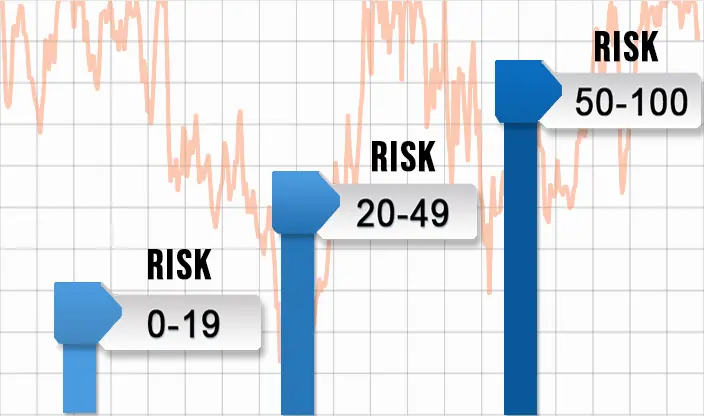How Smart Investors Manage Risk Without Sacrificing Growth
Concierge Wealth Services
How Smart Investors Manage Risk Without Sacrificing Growth
For experienced investors, the question isn’t whether to take risk—but how to define, measure, and control it without constraining opportunity. True sophistication lies in risk allocation, not risk avoidance. Smart investors understand that disciplined exposure sizing, liquidity planning, and evidence-based decision-making form the foundation of sustainable growth.
Redefining What Risk Really Means
Many investors equate risk with volatility. But in reality, risk is the probability of permanent capital loss or the inability to meet future cash flow needs. Smart investors manage these exposures by diversifying across risk factors—not just asset classes—while using frameworks that focus on liquidity, drawdown limits, and recovery timelines.
This perspective shifts the goal from chasing returns to preserving optionality. It’s the reason successful investors emphasize process over prediction and accept that uncertainty can be managed, not eliminated.
Evidence Over Emotion
Sophisticated investors rely on data, not instinct. They use quantitative methods to understand correlations, volatility clustering, and tail risk. By emphasizing repeatable inputs and clear governance, they remove emotion from critical decisions and create consistency across market cycles.
Process Before Product
Focusing on a defined process—like those seen in institutional-grade portfolio construction—allows investors to implement structure before choosing vehicles. This helps clarify exposure sizing, expected volatility, and rebalancing frequency.
The Balance Between Growth and Stability
Growth doesn’t come from avoiding risk—it comes from accepting measured risk intelligently. Smart investors often combine stable cash-flow assets with opportunistic growth exposures. The objective isn’t to outperform every year but to compound consistently with less drawdown stress and higher long-term confidence.
This measured balance often integrates quantitative risk management principles—like volatility targeting or drawdown constraints—to help align expectations with reality. Learn more about quantitative risk management and how it supports disciplined portfolio design.
Liquidity is a Risk Tool
Liquidity planning allows investors to endure volatility without forced selling. Maintaining appropriate reserves ensures that spending needs don’t coincide with market stress—reducing the chance of sequence-of-returns damage.
Adaptability Over Forecasting
Smart investors recognize that models can’t predict the future. Instead, they use adaptable frameworks that can recalibrate exposure based on measurable risk shifts—rather than guessing what markets will do next.
Where We Fit In
At Concierge Wealth Services, our role is to help qualified clients access fiduciary, research-driven advisory relationships that use these principles in practice. We do not provide securities or investment advice—but we facilitate introductions to an independent SEC-registered investment adviser whose process emphasizes quantitative discipline, transparency, and risk awareness.
If you’d like to understand how this approach differs from traditional models, start with An Invitation to Explore More.
Related Topics to Explore
- Concierge Wealth Services
- An Invitation to Explore More
- Institutional-Grade Portfolio Construction
- Quantitative Risk Management
- Why Average Investors Lose Money in Volatile Markets
- Discover What the Top 0.1% Already Know
Request a Confidential Conversation
📞 Call us at 800-533-5969
Important: We do not provide securities or investment advice. If appropriate, we may introduce you to an independent SEC-registered investment adviser for evaluation under their regulatory framework.
How Smart Investors Manage Risk Without Sacrificing Growth — Frequently Asked Questions
Can investors reduce risk without giving up returns?
Yes. Smart investors balance exposure sizing, liquidity planning, and evidence-based rebalancing to manage volatility without abandoning growth potential.
What does “process before product” mean?
It means building a quantitative, rules-based structure before choosing investment vehicles—ensuring every decision follows clear risk guidelines.
Why is liquidity management so important?
Liquidity prevents forced selling during market downturns, helping portfolios recover faster and maintain compounding potential.
Do you provide investment advice?
No. Diversified Insurance Brokers does not provide securities or investment advice. When appropriate, qualified clients are introduced to an independent SEC-registered adviser for evaluation.
What’s the first step toward learning more?
Begin with An Invitation to Explore More to see if this introduction process fits your objectives.
Important Notice: Wealth management and investment advisory services are provided exclusively through our independent SEC-registered investment adviser partner. Our insurance firm does not offer securities or investment advice.
About the Author:
Jason Stolz, CLTC, CRPC, is a senior insurance and retirement professional with more than two decades of real-world experience helping individuals, families, and business owners protect their income, assets, and long-term financial stability. As a long-time partner of the nationally licensed independent agency Diversified Insurance Brokers, Jason provides trusted guidance across multiple specialties—including fixed and indexed annuities, long-term care planning, personal and business disability insurance, life insurance solutions, and short-term health coverage. Diversified Insurance Brokers maintains active contracts with over 100 highly rated insurance carriers, ensuring clients have access to a broad and competitive marketplace.
His practical, education-first approach has earned recognition in publications such as VoyageATL, highlighting his commitment to financial clarity and client-focused planning. Drawing on deep product knowledge and years of hands-on field experience, Jason helps clients evaluate carriers, compare strategies, and build retirement and protection plans that are both secure and cost-efficient.

